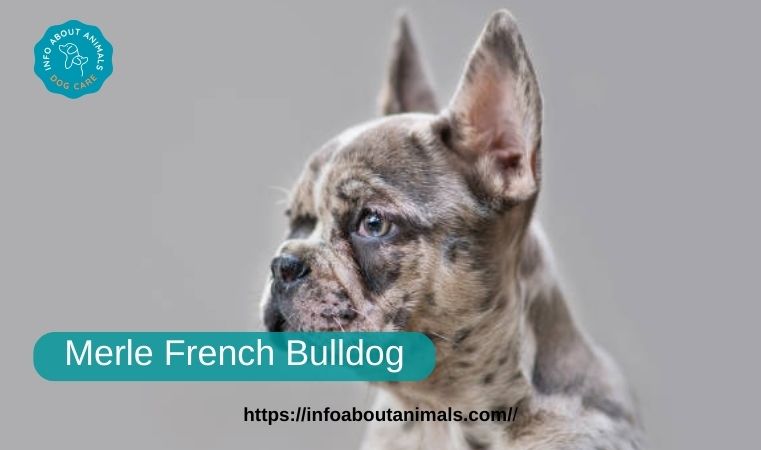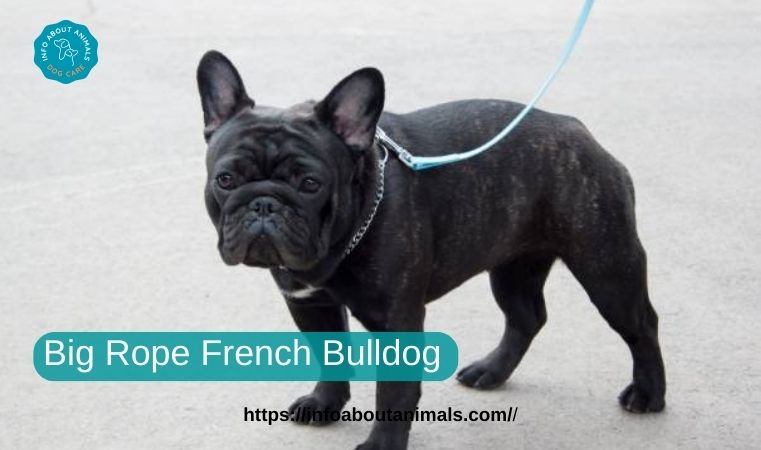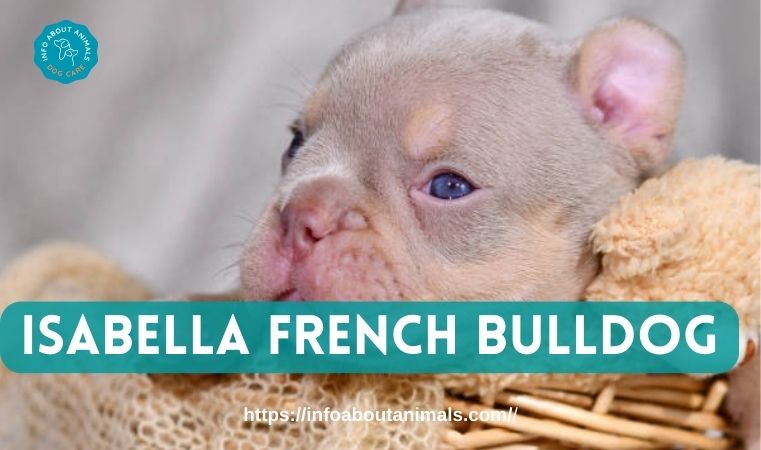The French Bulldog Brindle has black and brown stripes on their body, making it look unique and apart from other playful-natured French Bulldogs. Its friendly nature makes it one of the best additions to singles’ and family life. However, it should be noted that Frenchies, including Brindle French Bulldogs, are prone to eye problems. With a comprehensive advisor, one must often use canine eye wipes to avoid buildups and infections. When travelling with your Brindle Frenchie in a car, secure them safely with a dog seatbelt to minimize possible injury during accidents.
Research is essential before welcoming a dog into your home. We have prepared an entire guide to help you learn everything about Brindle French Bulldog puppies and local breeders. The Brindle pattern on the French Bulldog has dark stripes on a lighter base colour, similar to the distinction that puts its name close to that of a tiger. These stripes usually come on a red or fawny base coat. Though recognized as an official coat color in the American Kennel Club (AKC) standard, these variations, like Isabelle or lilac brindle Frenchies, are considered rare and not provided for inside the standard.
Brindle French Bulldog Origin
The Brindle French Bulldog, one of the most popular color varieties of the French Bulldog, originated in 18th Century England as a pet dog for lace workers, after which it gained favor with the French upper class. This is due to the intentional crossbreeding of English Bulldogs with various French breeds, which has endowed this breed with the unique coat pattern sported by it – the Brindle French Bulldog. This fascinating history underscores the breed’s enduring appeal and distinctive combination of English and French influences.
Appearance & Size Of Brindle Frenchies
Brindle French Bulldogs have unique patterns on the coat, identified mainly by the thickness and intensity of black and brown stripes. This provides the dogs with short, glossy, smooth fur, among other distinct characteristics. Muscular and compact, Brindle Frenchies fall between 16 and 28 pounds with a height at the shoulder of 11 to 12 inches.
Dogs from this breed often share a short, “bat-like” snout that gives them a recognizable facial characteristic. The forehead is often wrinkled, and the shape of the ears is also one of the most common traits of the breed. From its beautiful brindle coat pattern to its compact, muscular build, all these features combine to make for a look that is unmistakable and loveable for Brindle French Bullies.
The Brindle French Bulldog’s Genetics
Brindle French Bulldogs have a complex brindle pattern resulting from complex genetics, with some studies indicating complex interactions between a number of the alleles that give rise to the unique coloring of the coat.
The above gene contributes much to the brindle pattern and is found at the K locus. This allele controls the production of two kinds of melanin: phaeomelanin, standing in for a red or yellow pigment, and eumelanin, producing black pigment. At this gene locus exist two alleles: K and k. The K allele, being recessive, results in a subdued color, while the dominant K allele imparts a full-color appearance.
Another important gene related to the brindle pattern is found at the A locus controlling coat pigmentation. Three alleles exist at the A locus, such as Ay, aw, and at. The recessive Ay allele dilutes the coat color and the dominant aw at the identical alleles. The addition of the brindle pattern is due to the dominance of the K locus and heterozygosity at the A locus.
Other genes work alongside the K and A loci to affect the manifestation of the brindle pattern. The E locus, for instance, affects the production of black pigment, and the D locus affects the degree of pigmentation. But none of these alleles, amongst others, directly affect the manifestation of the brindle pattern.
Thus, Brindle French Bulldog genetics is very complicated, consisting of the interplay of many alleles. Knowing these basic genetic principles enables breeders to select and choose how to produce an attractive Brindle French Bulldog.
Kinds Of Brindle French Bulldogs
Brindle French Bulldogs come with different looks and patterning for the striping. Three types of Brindle French Bulldogs are regular, pied, and piebald.
Brindle French Bulldogs are captive with the striations of colors they present, and as distinct types represent each, one is craved by dog-enthused enthusiasts. Following is a description of the popularly different types of Brindle French Bulldogs and the distinctly different coat patterns that set them apart.
1. Red Brindle French Bulldog:
The base color of a Red Brindle French Bulldog is brindle fawn with clear black lines all over. These dogs are highly valued because they are rare and cherished as excellent family companions. Their amiable and sentimental disposition makes them beloved pets.
2. French Blue Brindle Bulldog:
French Blue Brindle Bulldogs will often have a blue-grey base coat that may be covered with stunning black stripes. Sometimes, the stripes found on these dogs can also be tan or fawn in color instead of black. Many people ought to appreciate this stunning color due to its mind-blowing visual effects. The Dalmatians are among the intelligent dog breeds and are exceedingly loyal, making them incredibly good for companionship.
2. Black Brindle French Bulldog:
The initial coat of this breed is covered with lively black brindle stripes. Their cheerful and lively nature makes them excellent pets, hence one of the most desirable breeds of dogs today. They make excellent family companions, and they get along ideally with children.
4. Frenchie Pied Brindle (White And Brindle):
Frenchie Pied Brindles are those dogs whose hairs are either nearly or mostly white colored with brindle markings localized to a few spots on them. This pattern of hair colour makes these dogs look different and beautiful from others. The patches get distributed uniquely on each pied, brindle Frenchie, distinguishing them from one another. The appearance of the pied pattern involves rather dark streaks or stripes on top of paler fur.
5. Reverse Brindle Bullies from France:
The Reverse Brindle French Bulldogs have darkness as their base color and bright stripes over their bodies. They will have much more tan patterning in their coats than deeper-brindled black or red brindle dogs, which look much lighter overall. Their look is something unique when it comes to a brindle dog.
6. Chocolate Brindle French Bulldog:
The chocolate brindle French Bulldogs sport a primary color coat endowed with lighter brindle stripes on top of it. These dogs are available in limited numbers and are amongst the gentlest and sweetest pets to which one may treat themselves. They also make for great family dogs because they behave well around children.
7. French Trindle Bulldog:
A “trindle” French Bulldog is another unique variety with a tricolour coat displaying brindle patterns instead of tawny marks. The brindle pattern covers black, grey (also known as blue) or brown (also known as red) brindle marks. Though trindle patterns are usually visible in other breeds, they also do in French Bulldogs. Such unique pigmentation becomes visible after a close look and is an additional part of their appearance.
Each of these Brindle French Bulldog varieties will exhibit diversity and charm, for which they are highly sought after and loved among families and individuals worldwide.
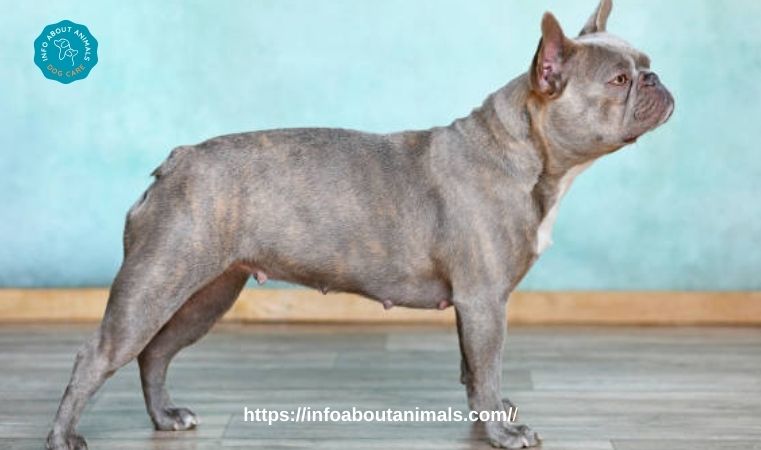
Where Does the Brindle Color Come From?
Brindle color is one of the oldest pigments within the French Bulldogs and is inherited through its genes, which are governed by multiple alleles due to their polygenic nature. According to the K-Locus gene, The brindle pattern is another excellent inheritance governed by the pigmentations of black, fawn, and brindle colours. Three unique K-Locus genes combined to create this handsome Brindle French Bulldog. For a French Bulldog to have brindle in the coat, both parents must contribute a recessive K gene.
Further genes modulate the particular brindle pattern so developed in French Bulldogs, meaning each brindle French Bulldog is unique. It may vary from having a brindled ‘cap’ on top of an otherwise solidly coloured coat to such extensive striping that it is almost impossible to make out the dog’s basic patterns. This genetic complexity accounts for the individuality and distinctiveness of brindle French Bulldogs’ coat patterns.
How should I take care of a brindle French Bulldog?
Caring for a Brindle French Bulldog involves simple yet essential steps to make it happy and healthy. Here is the guide to taking care of this type of Bulldog:
Routine Veterinary Examinations:
Regular veterinary review, say in time frames of 6 months, is highly important to assess the health conditions of Brindle French Bulldogs. They have specific susceptibilities regarding their health, and if any of the problems arise, they could be noticed early and taken care of by proper means. It is a good one to go for pet insurance, which provides reasonable monetary assistance regarding veterinary care.
Groom them:
Since the coat, in the case of Brindle French Bulldogs becomes conspicuous, it requires being maintained well with cleanliness. The bathing should be done for them at least four times a year and there should be regular combing of their hair to avoid tangling up and maintaining comparative shape.
High-Quality Diet:
A healthy, balanced diet has a vital role in the overall health of a Brindle Frenchie, and the same is its coat. The diet should have water, minerals, vitamins, healthy carbohydrates derived from fruits, vegetables, rice, oats, and barley, and healthy fats derived from meat and oil. Avoiding includes artificial food colorings, preservatives (BHT and BHA), gluten, corn syrup, and white flour. The key to managing is a well-balanced diet.
Be Careful Outdoors:
Watch what your Brindle French Bulldog does outside. With its big chest, it won’t make a good swimmer, so monitor them around water. Its thin coat also leaves it at risk of sunburn, so don’t allow it in direct sunlight for long and provide shade.
Crate Training:
French Bulldogs are attention-seeking and prone to separation anxiety when their owner is absent. Crate training can help ease this anxiety and provide them with a secure and comfortable space. Crate training can also aid in housebreaking and make traveling with your dog more convenient.
Following these care guidelines ensures your Brindle French Bulldog stays healthy, happy, and well-maintained, making them a cherished family member.
Read Also: Lilac Merle French Bulldog
What are Brindle French Bulldog Pros and Cons?
Ownership of a Brindle French Bulldog has its pros and cons that merit consideration:
Advantages:
- Space and Transportation: The compact size of Brindle French Bulldogs makes them adaptable in houses and apartments. They do not need much space to live or require specific transportation facilities.
- Low Maintenance: These dogs do not shed much, and the short mane is easy to maintain. A regular brushing can further lower the shedding. Thus, their unlikely need of grooming makes them perfect candidates for busy or working people or families.
- Minimal Exercise Needs: Brindle French Bulldogs require plenty of exercise time. They like small walks and play sessions but typically have low exercise requirements. Being very cuddly and companionable, they are considered perfect indoor dwellers.
- Loyal and affectionate: French Bulldogs are known for having great loyalty and being affectionate. A Brindle French Bulldog will be your family’s best companion, providing limitless love and companionship.
- Distinctive Appearance: Very catchy because of the typical brindle-coloured coat pattern, differentiating them from other dog breeds soliciting preference as a companion dog.
Disadvantages:
- Cost: The Brindle French Bulldogs are well known, giving them a high price. On average, the puppies’ price ranges between $150 and $8,000, at most times reflecting how much demand is there amongst dog lovers.
- Health Problems: Although brindle French Bulldogs can be generally healthy, there are some predispositions towards some health issues that they share with the general population, like Cherry Eye, Skinfold Dermatitis, and Brachycephalic Obstructive Syndrome (BOS). With selective breeder choice, an owner may mitigate risk from these ailments, but one must prepare for future possible health problems.
- Climate Sensitivity: Brindle French Bulldogs will likely be sensitive to extreme temperatures. A scorching climate will worsen their difficulty in breathing, mainly for those who suffer from Brachycephalic Obstructive Syndrome. They can also easily get burnt by the sun due to the sensitiveness of the skin, and it is hard for them to keep warm when outside under icy weather conditions. Moderately temperate conditions are best for them in terms of health.
Common Health Issues of Brindle French Bulldog
Brindle French Bulldogs have common health issues, like many others of their breed. Awareness of such problems would make a good owner take pre-emptive measures that would guarantee the safety of their pet:
- Trouble Breathing: Brindle French Bulldogs are likely to have problems with breathing due to their short snouts, especially in high-humidity areas. Because of their flat faces, they might have a difficult time trying to breathe correctly.
- Hip Dysplasia: Hip dysplasia is believed to be a congenital condition in which the hip joint does not form properly, and secondary joint changes and arthritis may develop. This problem can affect Brindle French Bulldogs as well as many other breeds as well. However, its impact may be minimized with careful veterinary monitoring and selective breeding.
- Skin Problems: French Bulldogs with brindle coats are sensitive to skin-prone redness, itching (pruritus), and other skin-related dermatological problems. A healthy diet, grooming, and routine check-ups would help the French Bulldog overcome these skin conditions.
Any of these issues would be detected previously by regular veterinary examination to keep an eye on the health of Brindle French Bulldogs; it can provide a better chance to rectify. Dogs also breed correctly, which could reduce any possible genetic disorder among this loyal breed.
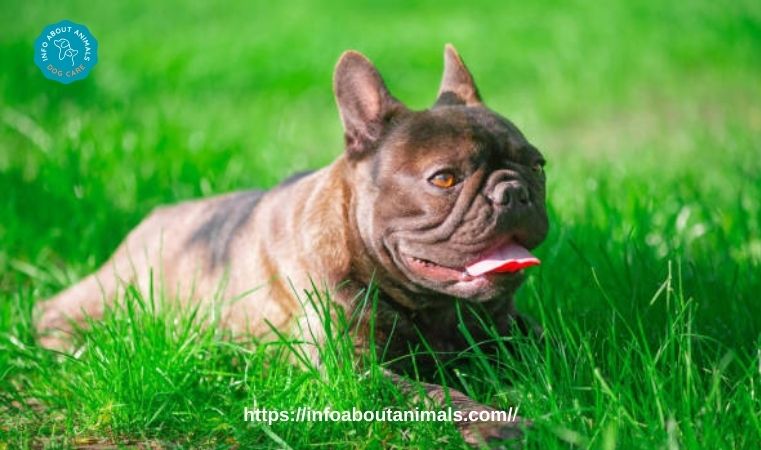
Where can I find a French Bulldog with brindles?
Finding a Brindle French Bulldog can be quite an interesting, albeit slightly challenging, experience in that they are rare and quite popular. Here’s how to find one:
Get from a Reliable Breeder:
- Research Thoroughly: The search for a Brindle French Bulldog should be guided by the appropriate research. Consider researching good breeders with reputable experience in assessing health, evaluating temperament, and responsible placement of puppies.
- AKC Breeder of Merit Program: The American Kennel Club (AKC) has a “Breeder of Merit” program, listing breeders who’ve made remarkable strides in breeding healthy, capable dogs. You can start searching here.
- Online and Word of Mouth: Other than the AKC program, numerous reputable breeders avail their services through online and word of mouth. Do a background check on the breeder’s qualifications, reputation, and referrals. Ask potential breeders about their health, lineage, and how they care for their puppies.
Adopt from a Rescue:
- Think Adoption: Another place to get a Brindle French Bulldog is an adopt from rescue. There are various times that the people who first bought a French Bulldog have returned them to a rescue for some reason.
- Check Adoption Agencies: Pet Finder and French Bulldog Village typically have French Bulldogs up for adoption. You can surf their sites and contact them.
- Medical Records: At times, rescue organizations may have the medical records of dogs one wants to acquire. This can give an understanding of the dog’s health and history.
- Cost-Efficiency: Bringing a Brindle French Bulldog home through a rescue, however, may prove somewhat more cost-effective in comparison to buying from a breeder, what with vaccinations and spay-neutering out of the equation.
Please note that locating a Brindle French Bulldog may take some time through a breeder or rescue, so please be patient and persistent in your search. Wherever the place, it is essential that the welfare and health of your future pet should be highly prioritized when assessing where to get one and ensured from either responsible breeders or reputable centres.
Frequently Asked Questions (FAQs)
How Much Does A Brindle French Bulldog Puppy Cost?
Reputation of the breeder, location, and lineage of the puppy will factor in determining the price of a brindle French Bulldog puppy. An individual must pay around $2,500 to $5,000 for a brindle Frenchie puppy. The unique brindle Frenchie puppies with colors like lilac, isabella or even blue brindle shades will exceed the $10,000 mark and get to as high as $50,000.
What Is A Reverse Brindle French Bulldog?
A black brindle French Bulldog is a Frenchie with the coat appearing to be black, but then when one looks closely, one can see the brindle fawn markings under some lighting conditions. The kind of coat that has the color brindle is alternatively referred to as a reverse brindle.
What Are the Different Types Of Brindle French Bulldogs?
The three principal types of brindle French Bulldogs are traditional brindle, black brindle (reverse brindle), and blue brindle. The base coat for the traditional brindle is either fawn or cream with stripes of black. The black brindle appears almost black but has clear brindle markings. Blue brindle has a base color of blue-grey with black stripes.
Are Brindle French Bulldogs Rare?
Brindle French Bulldogs are not considered rare but less common than fawn or pied Frenchies.
What Does the Brindle Pattern Look Like On A French Bulldog?
The brindle pattern appears on the French Bulldog as darker stripes on any lighter base coat. The stripes may be thin or thick and usually black, brown, or gray.
What Colors Do Brindle French Bulldog Puppies Come In?
Brindle shades of a French Bulldog puppy can be represented by fawn, cream, blue, and black. The pattern of brindling strikes most often iterates in the form of striping along the base coat color.
Does The American Kennel Club Recognize the Brindle Frenchie?
The American Kennel Club (AKC) indeed regards brindle French Bulldogs as a standard breed color.
Do Brindle Frenchies Shed?
Yes, the brindle French Bulldog shed has short, smooth coats that would need less grooming.
Are Brindle Frenchies Hypoallergenic?
No, the brindle French Bulldog is not hypoallergenic. They shed hair and dander like all other dogs, so it can cause allergies to people who are allergic.
Conclusion
Brindle French Bulldog is an exciting breed, unusually popular over the last years. Famous for their caring, flexible character, one may become an ideal addition to any family or living place.
Prospective owners of the Brindle French Bulldogs need to work hard on their responsibilities and commitments. They need frequent exercising, healthy eating habits, and thoughtful grooming for their health to remain at its best.
It should be noted here that brindle French Bulldogs are predisposed to specific health problems and diseases, for example, hip dysplasia and respiratory problems. Potential owners shall, therefore, be responsible for such risks and are supposed to take care of them in the best way possible, including identification with a good breeder who has good dog taking care on record.
For those willing to invest the required care and attention, the Brindle French Bulldog can be an exceptional companion, bringing joy and happiness to any household with its unique appearance and endearing personality.

